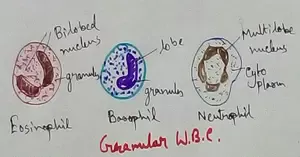Essay on Shri Aurobindo
Born on 15th August, 1872 in erstwhile Calcuttato Sh. Krishan DhunGhose and Shrimati Swarnolatta Devi, Sri Aurobindo was known as Aurobindo / Aravinda Ghose. He was a yogi, a seer, a philosopher, a poet and an Indian nationalist who advocated the philosophy of divine life on earth through spiritual evolution.
Under the guidance of his father, who was a staunch patron of British learning and culture, Sri Aurobindo spent his early years of schooling in Darjeeling, post which he went to London for his further education in the University of Cambridge. He grasped the nuances of two classical and several modern European languages during his tenure over there and on his return to India in 1892, he held several posts of eminence in administration in Brad and Calcutta.
His love for native culture made him seriously take up the study of Yoga and classical Indian Languages, especially Sanskrit. He actively participated in the freedom struggle of Indian from 1902 to 1910 and was also imprisoned in the British Jail for his political activities. Ultimately he took refuge in the French occupied island of Pondicherry where he devote the rise of his life to the development of integral ‘Yoga’ which as per his philosophy was necessary for a spiritually transformed life on earth.
Sri Aurobindopro Pounded his philosophy of internal Yoga in his main prose work ‘The Life Divine’ written in 1939. He was instrumental in alienating from the erstwhile Hindu belied that one must renounce worldly life to gain spiritual salvation and maintained that human life in its highest state is equivalent to the highest evolutionary stage and that should be the real goal of creation. He also propounded that the basic matters of life, matter and mind is possible to be linked by the human mind which can co-relate between the two spheres of the infinite and the finite. This future consciousness shall help to create a joyful life, imbibing the principles of love, harmony, unity, knowledge and thus overcoming the pull of dark forces.
He was a prolific author whose voluminous literary work comprises of books on philosophy, treatises on Yoga, poetry , plays and other works. Some of this notable works being ‘ Essays on the Gita’(1922) , ‘Collected Poems and Play’s (1942), ‘The Synthesis of Yoga’ (1948) , ‘The Human Cycle’ (1949) , ‘The Ideal of Human Unity’ (1949), ‘Savitri : A Legend and a Symbol’ (1950) and ‘On the Veda’ (1956).
He also laid the foundation stone of Sri Aurobindo Ashram in 1926, where he assigned the task of showing spiritual path to his followers to Mirra Alfassa, fondly known as ‘the Mother’. The ashram soon became world famous with followers flocking from all across the globe. He left for his heavenly abode at the age of 78 on December 5, 1980.
This mystic philosopher was amongst one of the great sons of the Earth who made his name in Indian politics. He was also nominated for the Nobel Prize in Literature (1943) and Nobel Prize for peace (1950) for his innumerable contributions in the field of literature, spiritualism and philosophy.
From Essay on Shri Aurobindo to HOME PAGE
Recent Articles
-
Formed Elements of Blood | Erythrocytes | ESR |Leukocytes |Neutrophils
Jan 15, 26 01:25 AM
Formed elements formed elements are constitute about 45 % of blood afeias haematocrit value packed cell volume mostly of red blood corpuscles and are of 3 types- erythrocytes, leukocytes and blood pla… -
What Is Plasma? | Blood Plasma | Proteins | Nutrients | Cholesterol
Nov 07, 25 10:29 AM
Blood is a mobile fluid which is a connective tissue and is derived from the mesoderm like cell any other connective tissue. Colour of blood is reddish and that flows inside the blood vessels by means… -
Disorders of Respiratory System | Tuberculosis | Pleurisy | Emphysema
Oct 28, 25 11:39 PM
Tuberculosis is very common disease and is caused by a type of bacteria called Mycobacterium tuberculosis. This disease causes different trouble in the respiration and infection of several parts of th… -
Regulation of Respiration | Respiratory Centres | Inspiratory Area |
Oct 14, 25 12:13 AM
Respiratory Centre is the area that controls the rate of respiration and it is observed to be located in medulla oblongata and pons. Respiratory Centre has the following will dispersed components like… -
Explain Transport of Gases | External Respiration | Tissue Respiration
Oct 09, 25 11:35 PM
In humans gaseous exchange is completed in the following ways the steps are - External Respiration or Breathing - Breathing in false taking in of Oxygen and giving out of carbon dioxide in the body. M…





New! Comments
Have your say about what you just read! Leave me a comment in the box below.